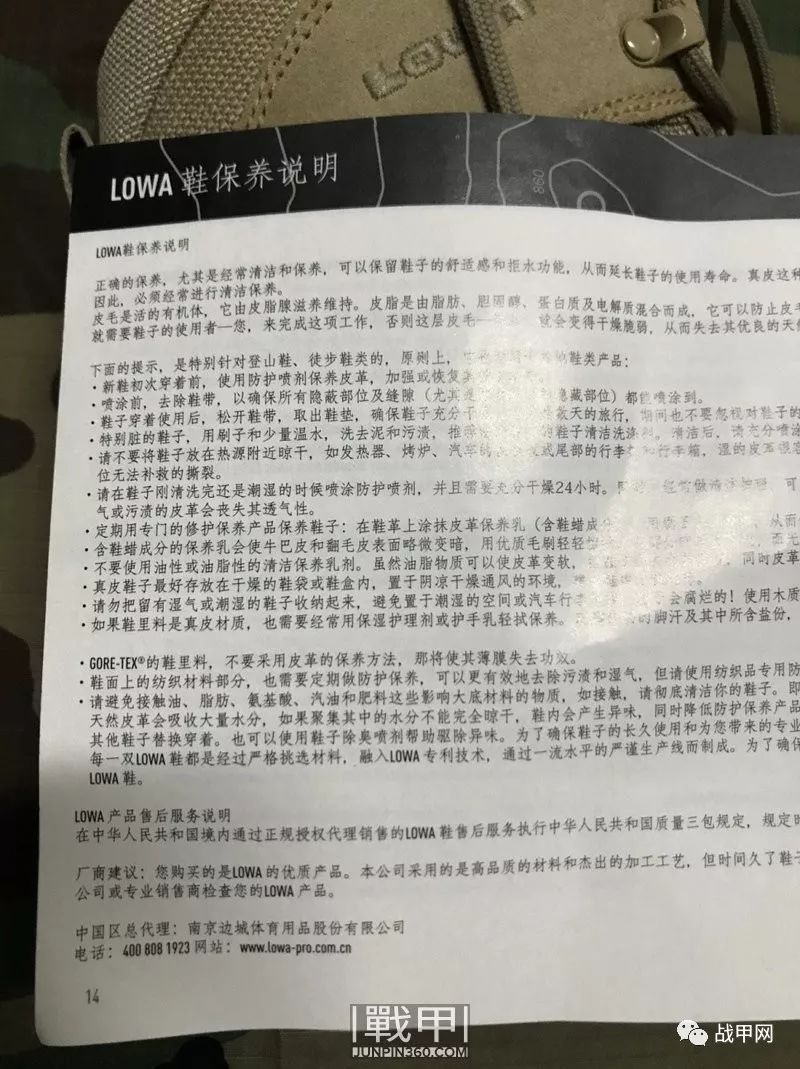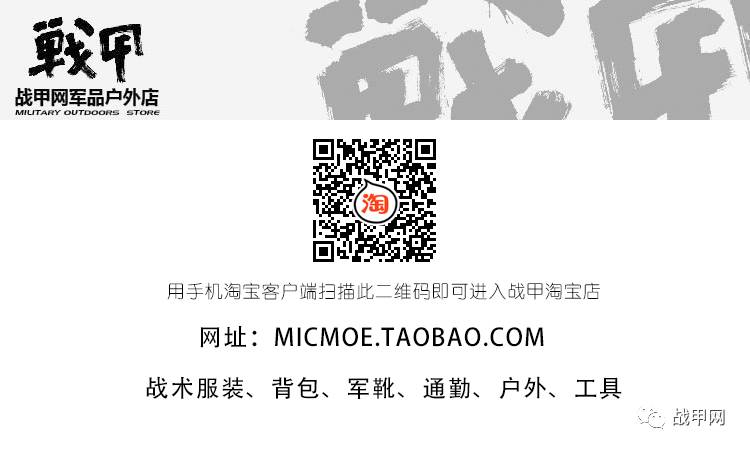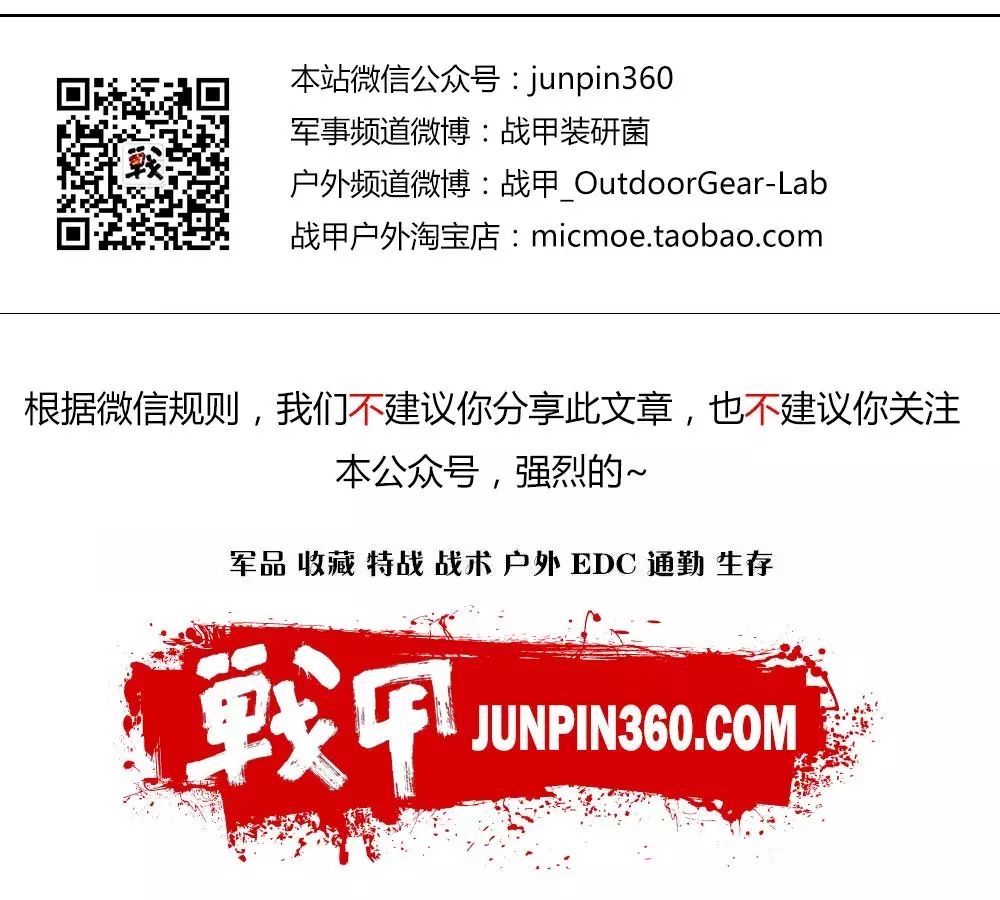It is well known that LOWA, a German brand, has a strong reputation both domestically and internationally, with countless classic shoes under its name. However, when the name “LOWA” comes up, the first image that comes to most military enthusiasts’ minds is likely the appearance of the ZEPHYR series. In fact, even within the ZEPHYR line, there are at least three common styles: the mid-top GTX version, the mid-top non-GTX version, and the high-top GTX version (I haven’t verified if there is a high-top non-GTX version). Today, I will briefly discuss the mid-top ZEPHYR GTX boots.
First, here are some images from the LOWA China official website showing that this shoe is commonly available in three colors:

The ZEPHYR GTX comes in sand, black, and grey (there are actually other similar outdoor styles and women’s versions that can be distinguished by whether the full product name has the suffix “TF”).
The pair I have is the sand-colored military version, which is also the most common color that people are familiar with. Next, let’s take a look at some photos of the actual product in my hands, starting with the shoe box.
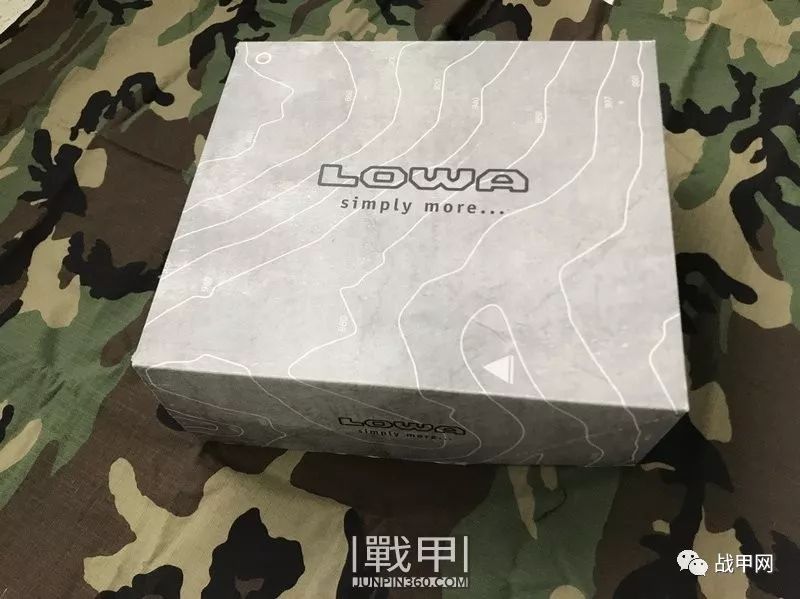
The LOWA shoe box is quite simple, featuring a large LOWA logo printed in the center of the box lid, with a background pattern that is actually the LOWA logo, which appears on many LOWA-related items (such as the official website, manuals, warranty cards, etc.).
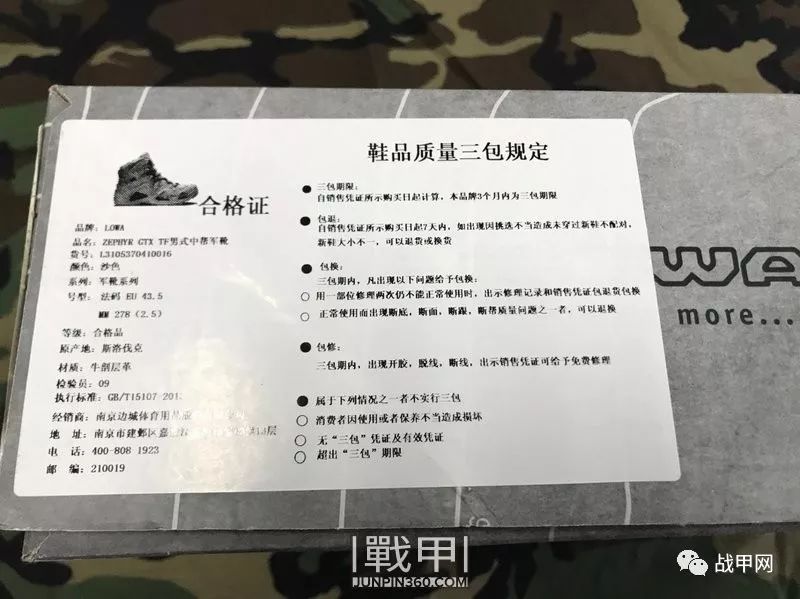
The side of the shoe box has a large Chinese label that clearly states the style, name, origin, and other information about the shoes in simplified Chinese. (Typically, the ZEPHYR series is produced in Slovakia, with different series having different places of origin; common ones include Slovakia, Germany, or Italy). This small label contains many important notices: such as “three guarantees period”, “return period”, “exchange conditions and period”, and “repair conditions and period”, as well as “situations where three guarantees services do not apply”.
Don’t underestimate these few words; there was once a superstitious German who bought another LOWA product and had a stroke of luck but couldn’t get free repairs because the warranty period had expired (though repairs could be done for a fee), leading to him cursing online. The clarity of the label is likely to avoid such awkward situations in the future.
Having said that, most of you may have gotten tired of my lengthy preamble, so let’s move on to the images of the shoes.
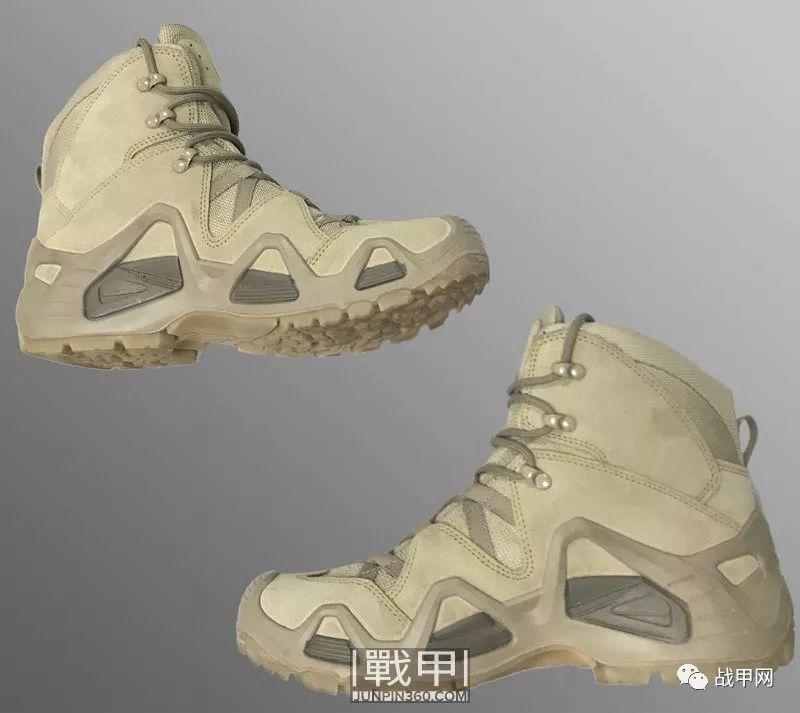
The shoe’s appearance is very high-tech, featuring a classic “exoskeleton” design combined with a grey midsole, which is a major characteristic of this shoe. This sole is also one of LOWA’s proud black technologies, known as the “Zentis Star Process”, which reportedly does not use glue for bonding but is molded as a single piece. The biggest advantage of this process is that it permanently solves the issues of “sole separation” and “delamination”, and the tightly packed material also has a certain degree of puncture resistance.

By the way, this high-tech “exoskeleton” is not just for show; according to the official website, it is LOWA’s unique external skeleton technology that provides a certain degree of support. (Although some reviews claim that this exoskeleton does not provide actual support, based on my personal experience, I feel that the extra support from this exoskeleton is present, albeit minimal, and it also offers some side abrasion protection.)
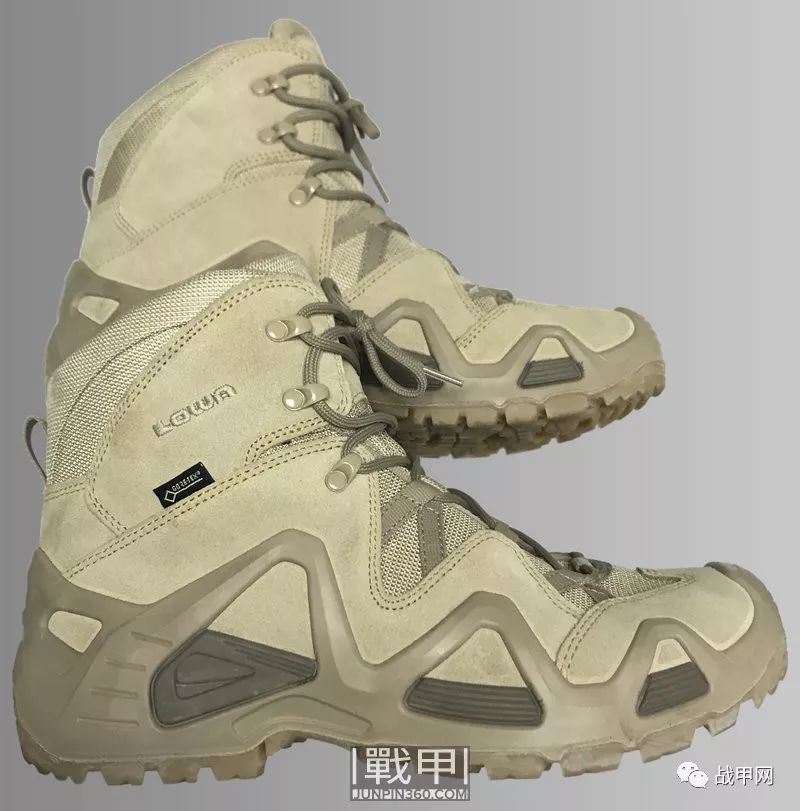
On the other side of the shoe, there is a clear “LOWA” logo and a black tag indicating “Gore-Tex”, showing that this shoe is the version with Gore-Tex lining (abbreviated as GTX). As for what “GTX” is, you can refer to the image below:
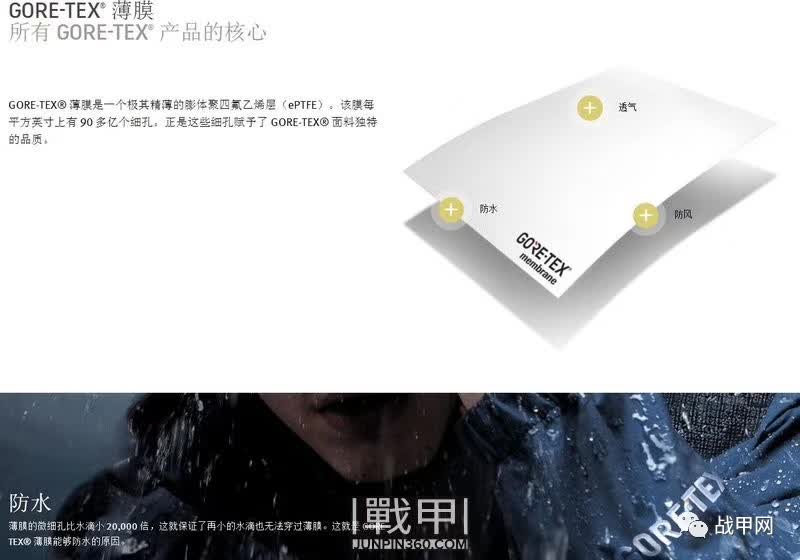
The exoskeleton wraps around the toe, providing protection against scratches that can occur from kicking rocks and similar objects during daily life or outdoor activities.
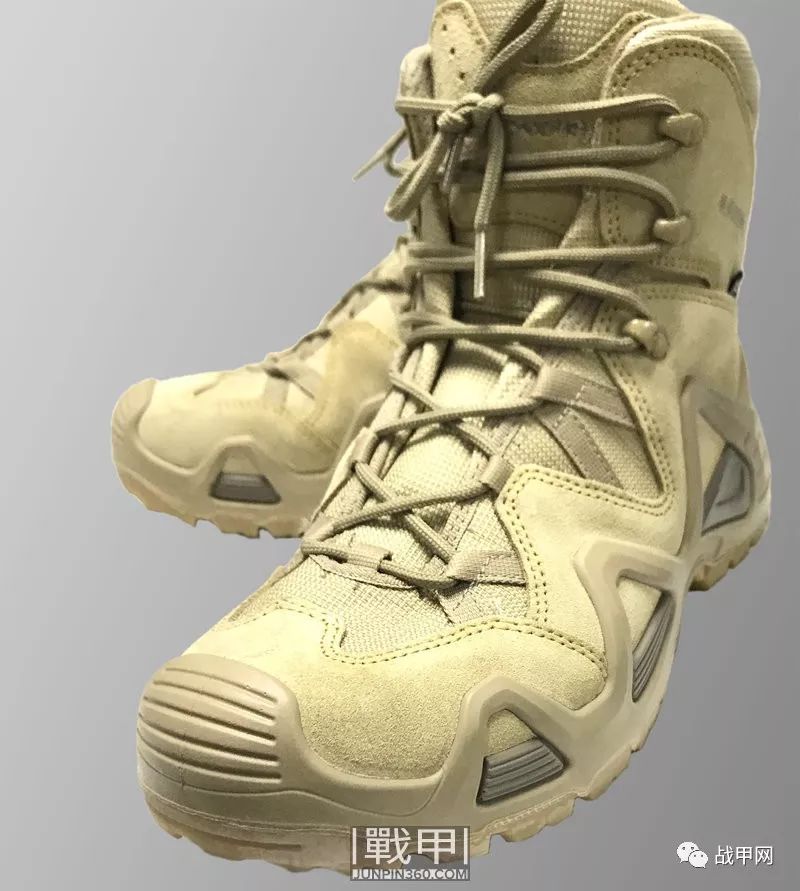
The heel is similarly wrapped with LOWA’s signature “exoskeleton” design, which not only looks cool but also helps prevent wear on the heel area.
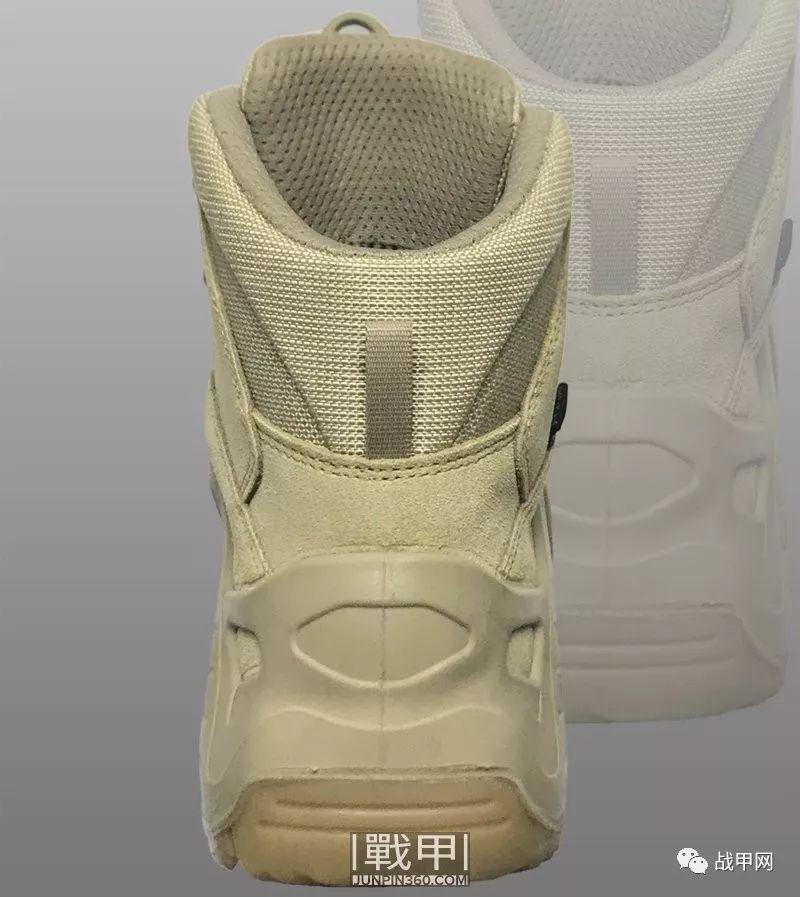
Unlike most outdoor boots, LOWA does not use Vibram soles but instead employs its own designed sole. Compared to Vibram’s gravel soles, this sole offers better slip resistance, but its wear resistance is slightly inferior. Of course, not all soles are suitable for every environment; any sole has its corresponding usage environment. LOWA’s sole is sufficient for daily city walks and moderate outdoor needs at low altitudes. However, on wet tiles, any sole will cause you to fall flat, so it’s advised not to attempt it.
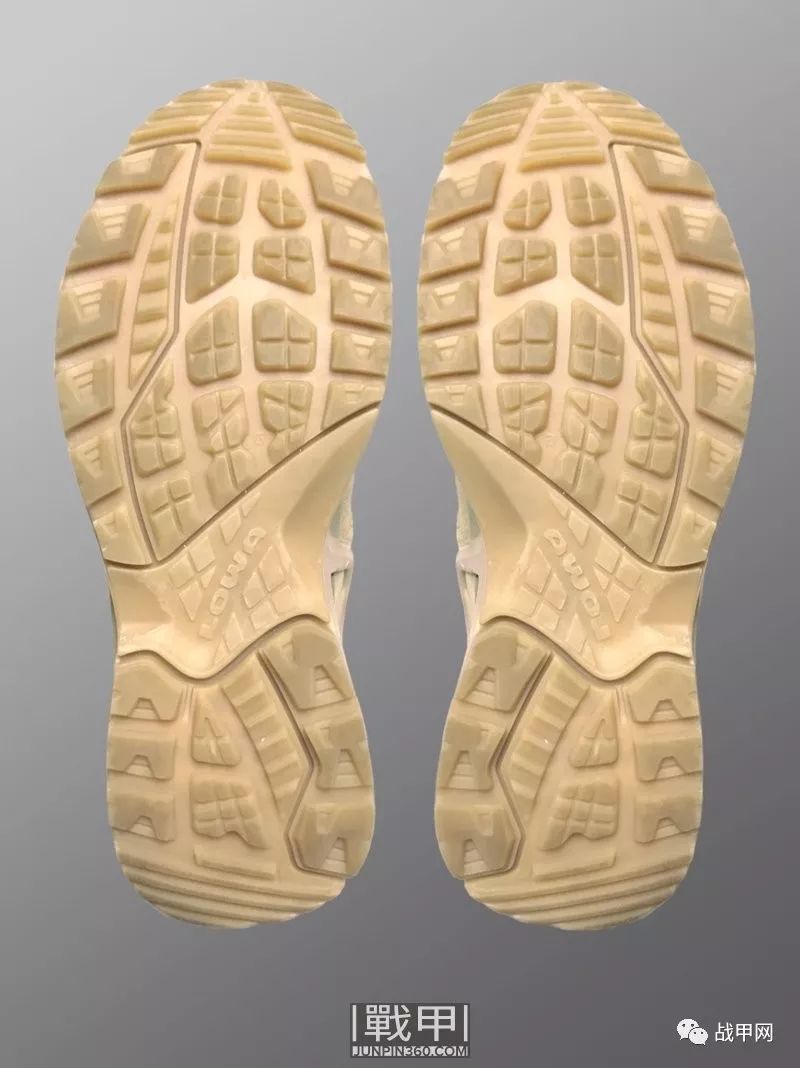
The main materials of the shoes are “cow split leather”, also known as “cow second layer leather”, and sand-colored nylon fabric. The integrated tongue design makes the tongue seamless with the shoe, providing a more three-dimensional appearance. Each shoe comes with three pairs of khaki straps as lace loops, extending down to the bottom of the shoe collar.
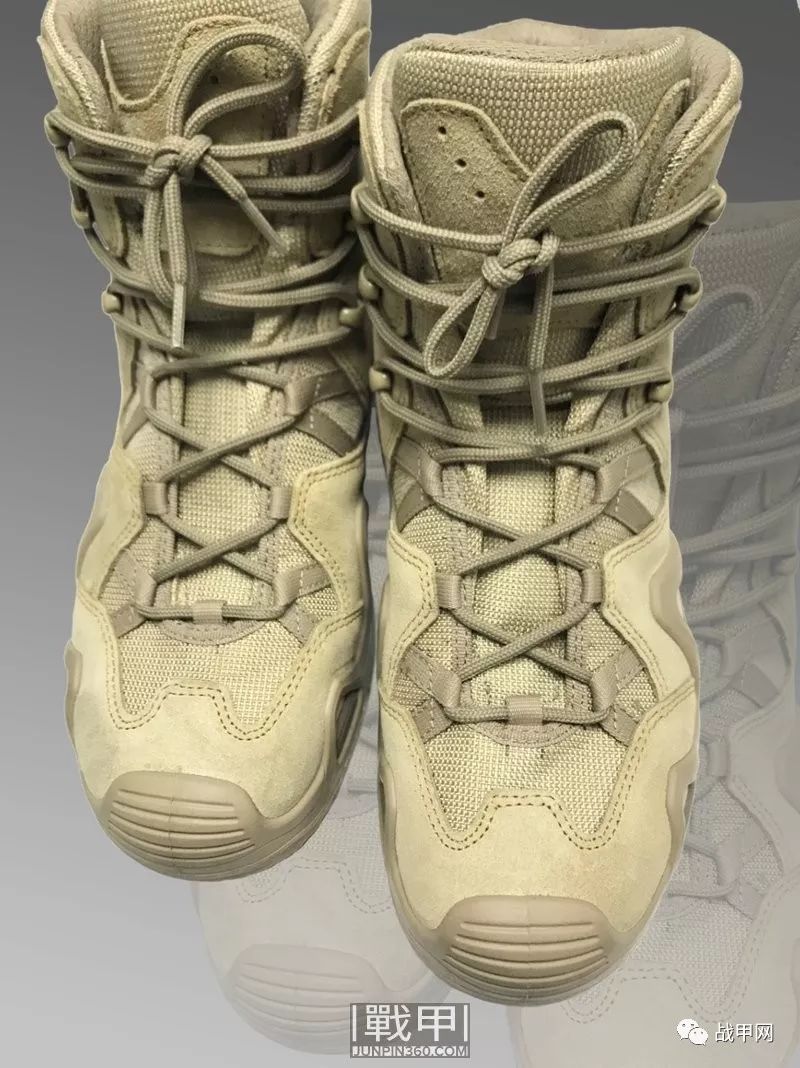
The upper part of the shoe collar features khaki metal lace loops, which, although not the currently popular “quick-release” style, are more stable compared to traditional designs. (The outdoor ZEPHYR models use a more traditional rivet + iron ring type lace loop, while the military models feature a streamlined metal lace loop that looks more “professional”). The LOWA logo on the side of the collar is done with embroidery, which, compared to manufacturers like Belleville that use heat stamping, ensures that there is no inconsistency in the depth of the logo on the left and right shoes.
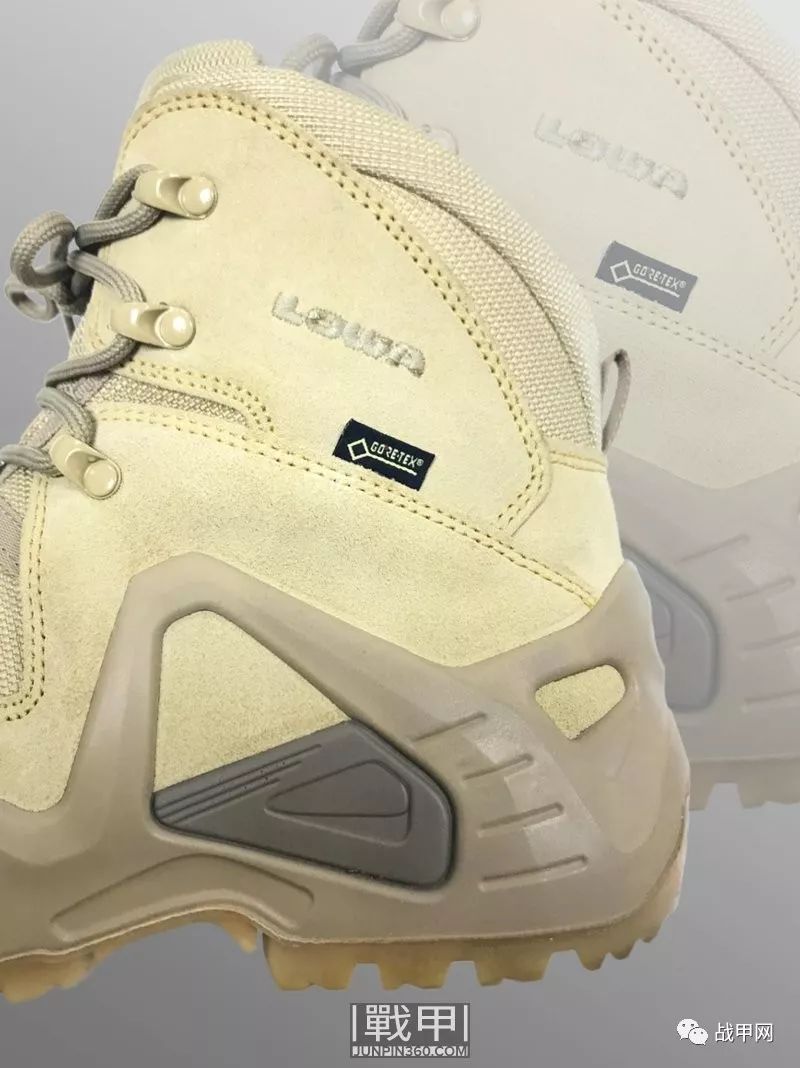
At the back of the collar, there is a fabric pull tab that allows you to easily pull the shoes on with your index finger. This position can also be used to hang the shoes for drying after cleaning or applying waterproof coatings.
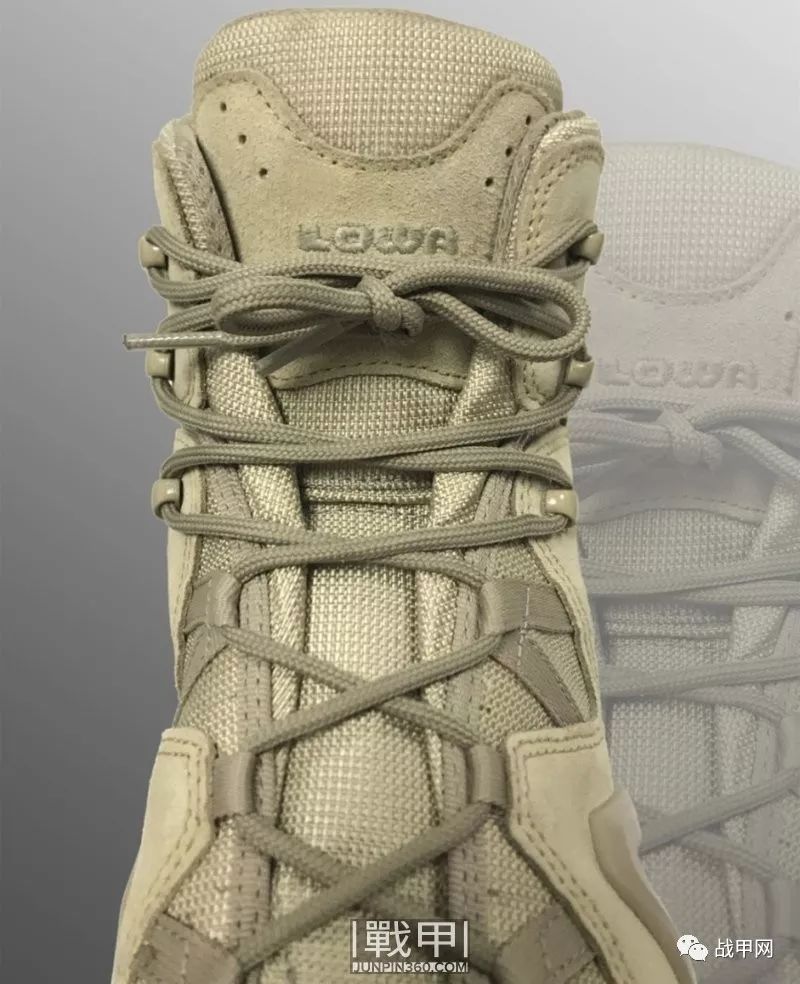
The front of the tongue is also embroidered with the LOWA logo, and above it are three pairs of diagonal ventilation holes, allowing air circulation into the shoe for a certain degree of heat dissipation.
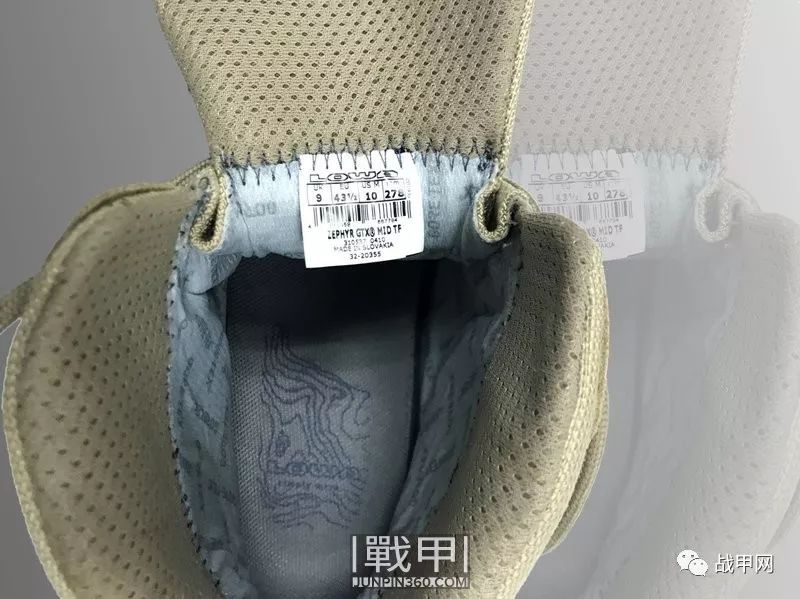
The inside of the tongue features a simple white acetate label printed with size, shoe insole length (corresponding to different country size standards), shoe model name, model code, and place of origin.
The inner side of the tongue and the upper edge of the collar are filled with breathable holes, which is part of LOWA’s proud CCS climate control system, designed to keep the interior of the shoe dry.

The collar and tongue interior are filled with memory materials that gradually adapt to the shape of your foot over time, combined with the shoe’s external “exoskeleton” to achieve a unique fit. Therefore, there may be some initial discomfort, but once the break-in period is over, the comfort level will significantly improve. (Some wealthy reviewers have cut the shoes without going through the break-in period, which, while eye-catching, is not something I recommend).
Compared to traditional mountaineering boots, LOWA’s shoelaces are relatively soft, likely for weight-saving considerations, as one shoe weighs just over 500 grams (depending on the size, there may be some variation), making it a very lightweight boot. I was initially concerned about the strength of the shoelaces, but after using them for a while, I found that my worries were unfounded; LOWA’s shoelaces are quite sturdy, although softer, they do not compromise on strength.
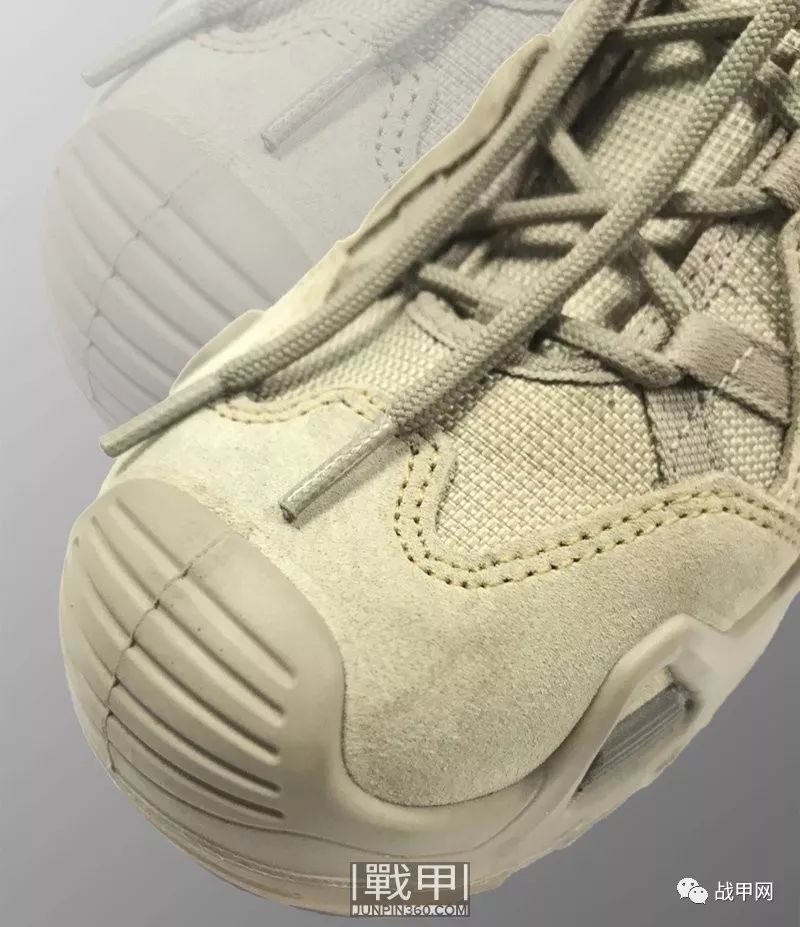
Looking inside the shoe from the opening, you can see the silver Gore-Tex lining (which is even printed with the Gore-Tex logo, as if to ensure that everyone knows it), and compared to several brands I’ve encountered, LOWA’s Gore-Tex lining is relatively thin. This has the advantage of better breathability, especially when combined with the CCS climate control system, significantly improving the dryness of the shoe. However, this also leads to the downside that the Gore-Tex lining is more prone to wear, so I recommend using good quality socks to avoid damaging the Gore-Tex lining with prolonged use.
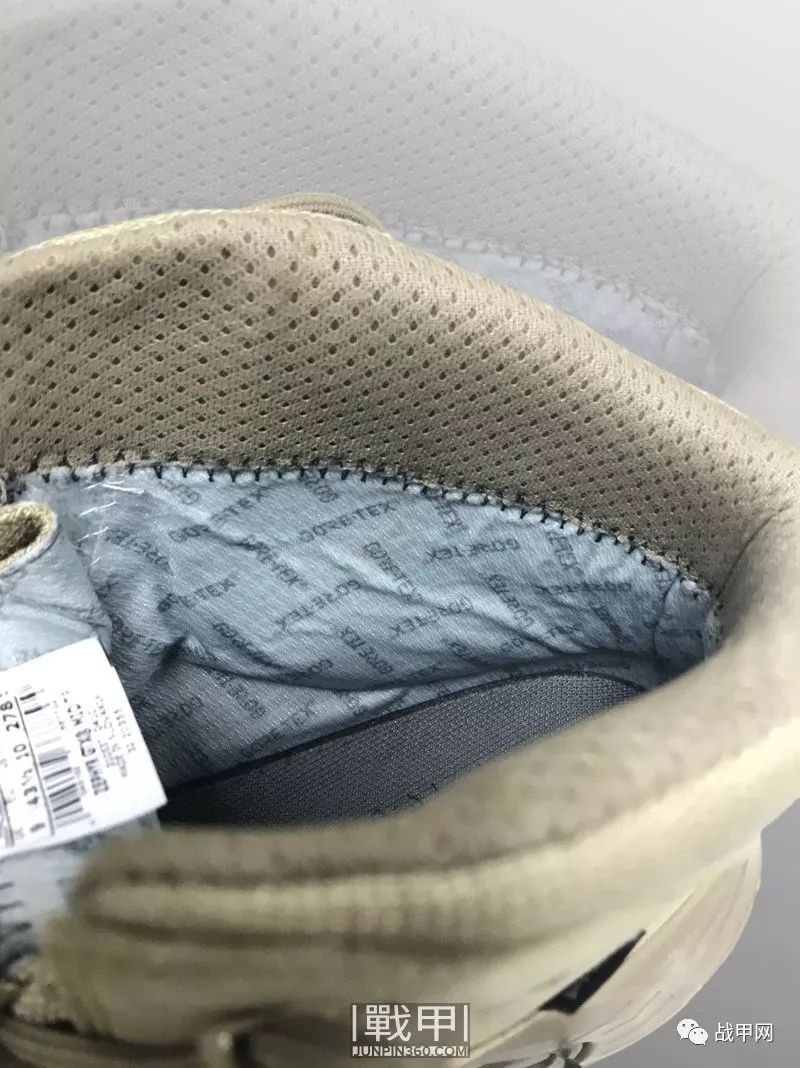
Speaking of the Gore-Tex lining, I should also mention the waterproof performance. Honestly, I wouldn’t foolishly take a shoe and soak it in water, as that would be quite disrespectful to Gore-Tex… Although Gore-Tex has been exaggerated in recent years, its official claims remain unchanged. My test of these shoes only requires a light splash of water on the surface, observing the “lotus leaf effect” from the factory-applied waterproof coating, watching water beads form into beautiful spheres and slide off quickly is sufficient. Of course, if you’re really curious, there are plenty of amusing Gore-Tex water immersion tests online that you can search for and enjoy.
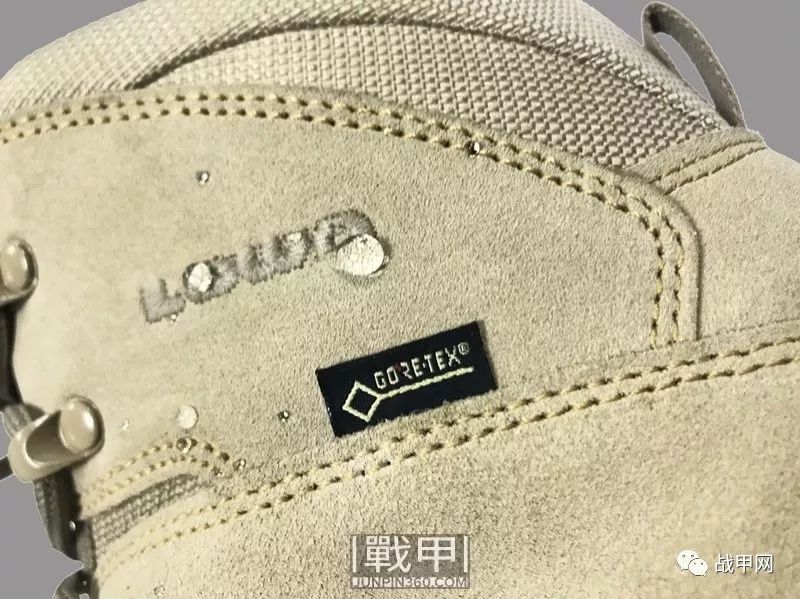
LOWA’s insole is perhaps the least noteworthy part of the entire shoe. It is almost devoid of any technical content, being a simple, hard insole.
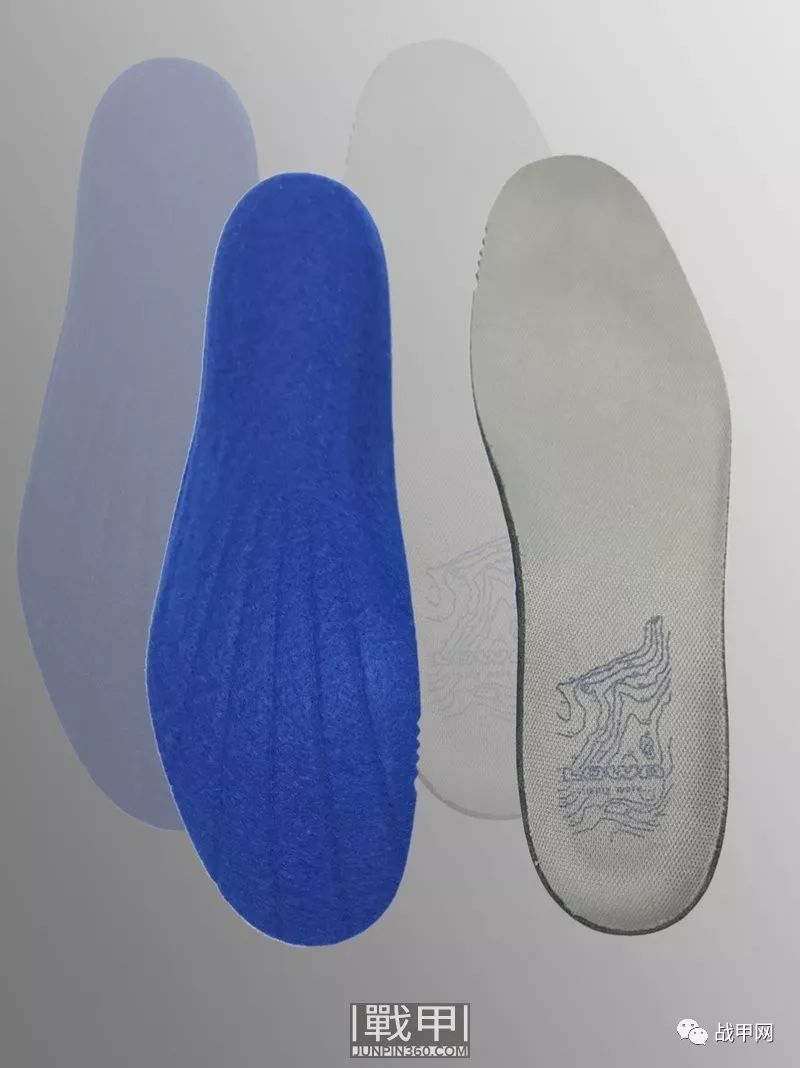
The heel section features the complete LOWA logo, which is really ubiquitous in LOWA-related contexts. This insole is relatively hard compared to several brands I’ve encountered, and I, being used to softer insoles, found it a bit uncomfortable. You can purchase a softer insole to replace it, as they are not expensive (after replacing it with a Salomon insole, the improvement in comfort is indescribable; I can confidently say that many negative reviews about LOWA stem from insole issues).

In conclusion, the LOWA ZEPHYR GTX is indeed a stylish and high-performance boot. However, every excellent shoe has its optimal environment. For instance, wearing LOWA boots in the sweltering heat of 36 degrees Celsius while squeezing onto the subway will undoubtedly feel uncomfortable. However, in the rainy winters of southern China or during the suitable climates of spring and autumn, or in areas with consistently moderate temperatures at low altitudes, or in colder regions like Europe, LOWA is extremely comfortable. This is why these shoes are favored by American special forces operating in Afghanistan (though many regular troops also have their share of LOWA enthusiasts, but due to the restrictions of the U.S. Army’s AR670-1 boot standard, there are not many images of regular troops wearing LOWA; however, among the more lenient procurement permissions of special forces, LOWA users are plentiful).
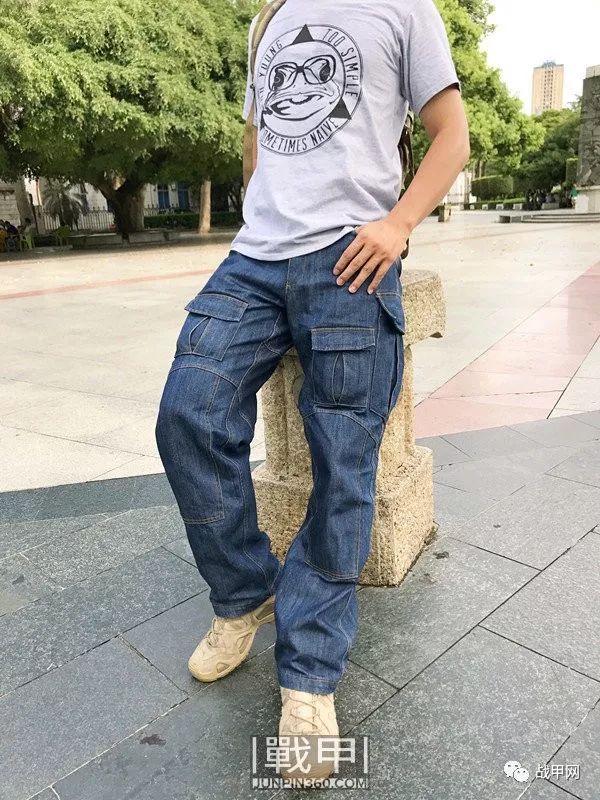
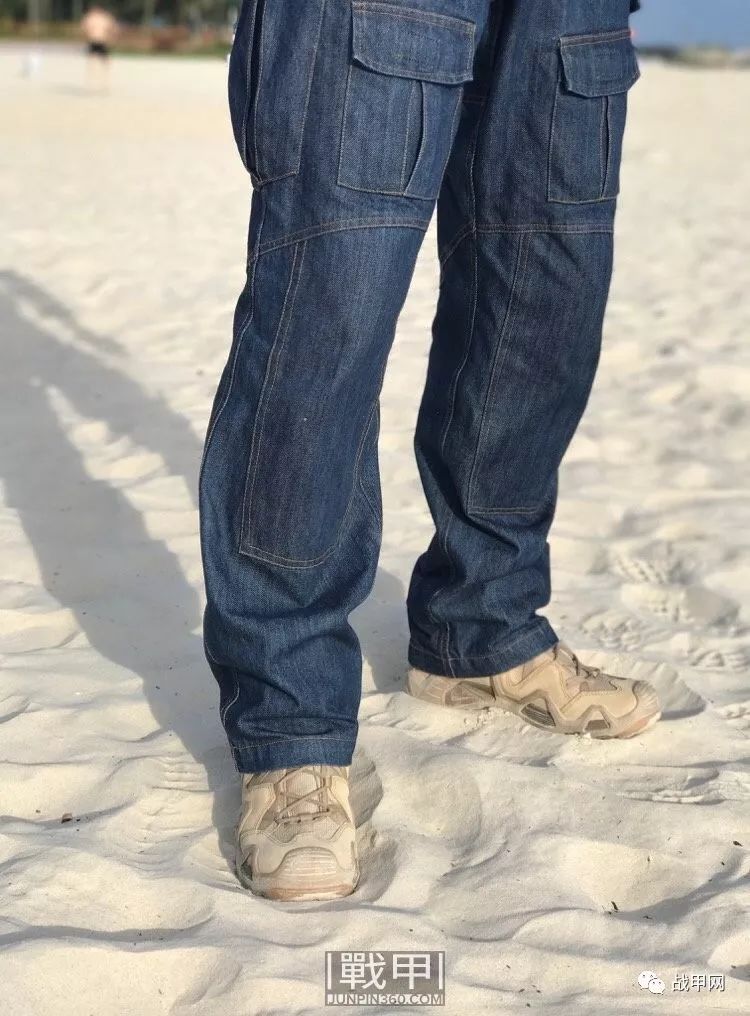
Not only the U.S. but many European armies also favor LOWA boots, including Germany, Belgium, Austria, Poland, and even France, as well as Latvia. Some foreign compatriots’ admiration for LOWA has reached a near-superstitious level (one compatriot who served in the French Foreign Legion mentioned to me that he wore LOWA in Central Africa for four months, experiencing two months of rainy season and two months of dry season, and wore them in Central Europe for a year, marching over 100 kilometers in three days of rain, rock climbing, parachuting, mountain climbing, heavy load running, and extended outdoor operations without any issues). I once had a dispute with a foreign soldier over the performance of LOWA, and looking back, it was quite naive of me.
Next, I will share some images of soldiers from various countries wearing LOWA boots (some of which may not be ZEPHYR but are similar or the same outdoor styles rather than military lines).
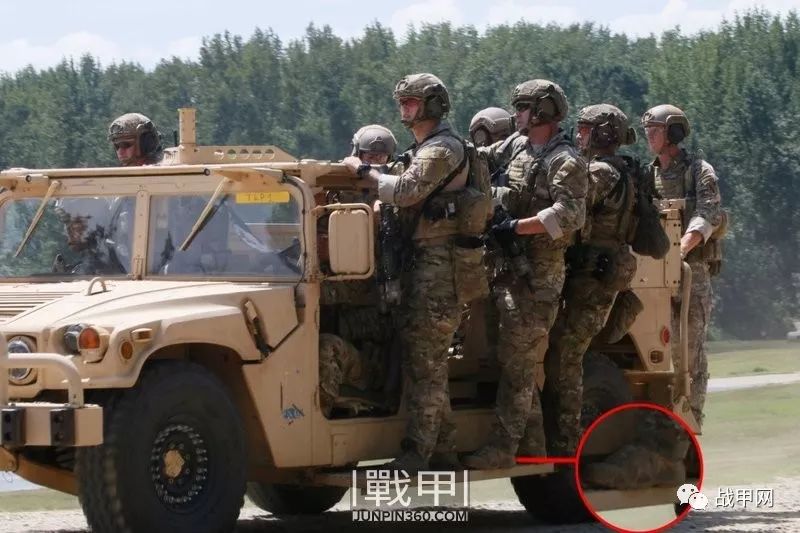
U.S. Army Special Forces training with LOWA boots.
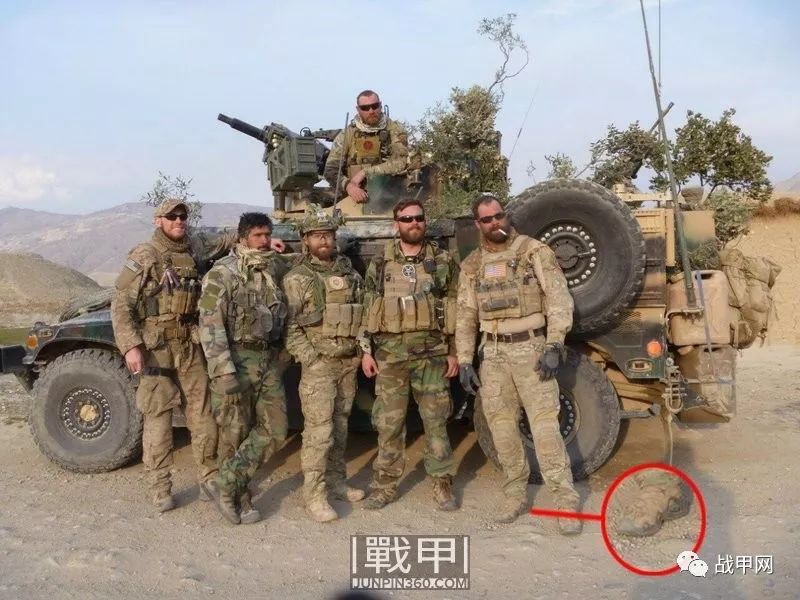
U.S. Special Forces posing on the battlefield in Afghanistan, showing that LOWA is very suitable for the mountainous environments of Afghanistan.
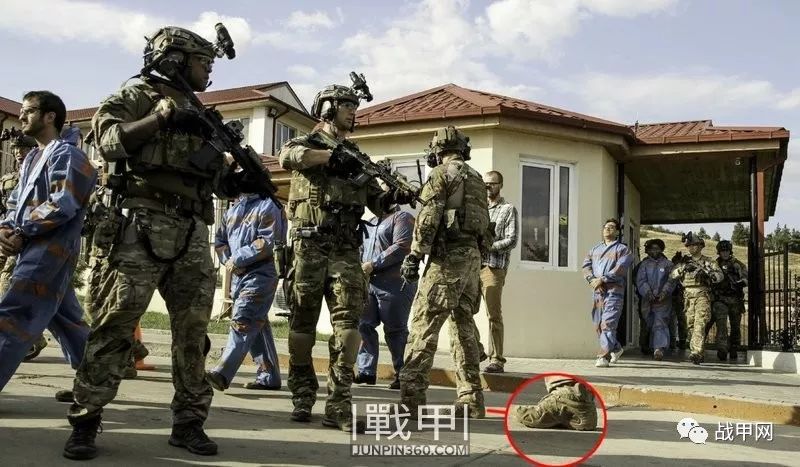
U.S. Special Forces in training.
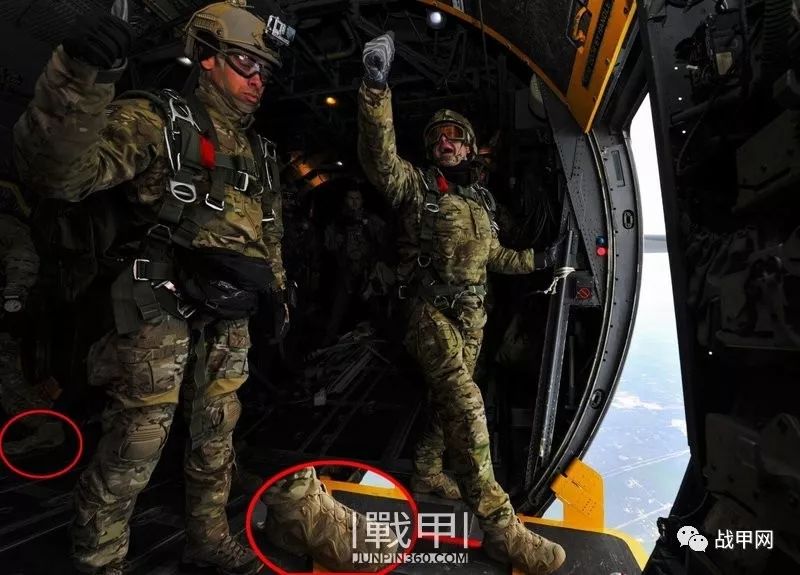
U.S. Special Forces members using LOWA during parachute training; it is worth noting that another member in the background is also wearing LOWA shoes.
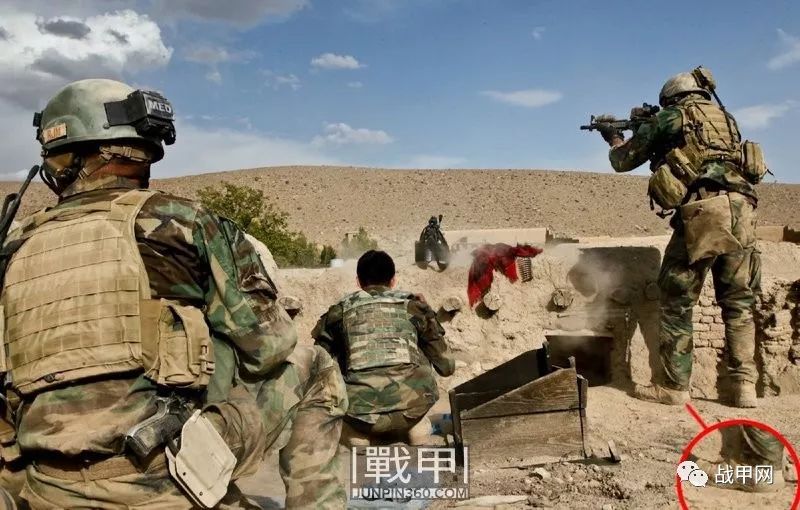
U.S. Special Forces member jumping out wearing LOWA.
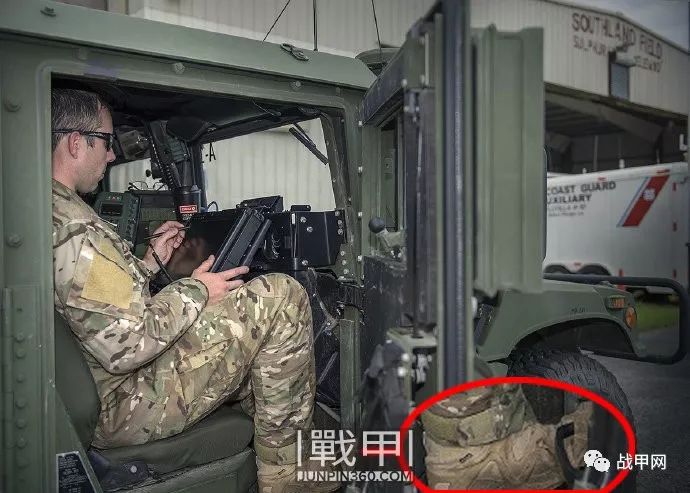
U.S. Army Special Forces member using LOWA on the battlefield in Afghanistan.
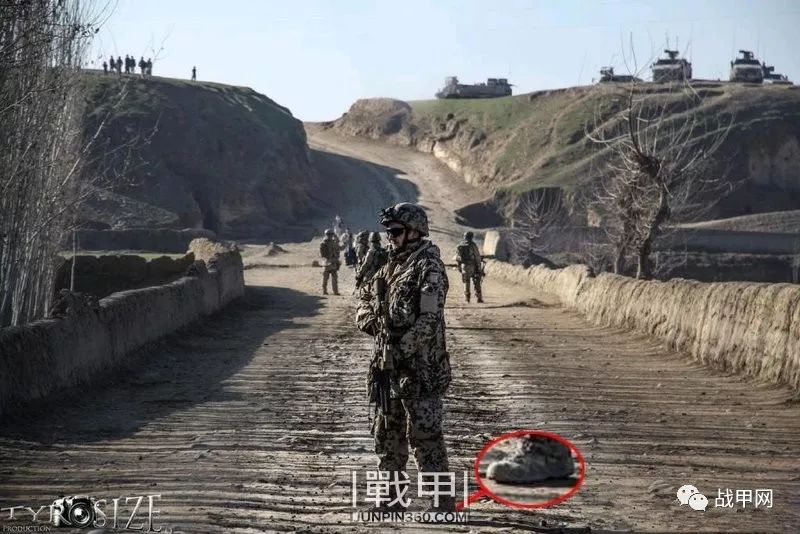
U.S. Special Forces soldier participating in disaster relief during Hurricane Harvey (in such extreme humid conditions, the ZEPHYR GTX is an excellent choice).
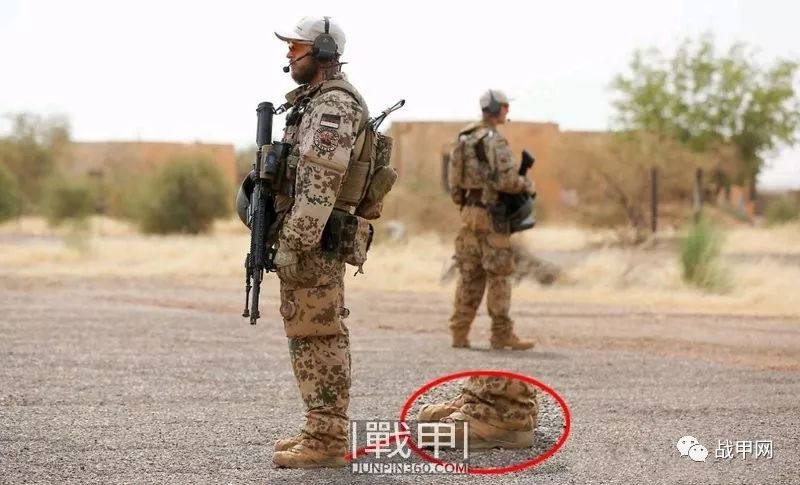
German soldier wearing LOWA, seemingly also in Afghanistan.
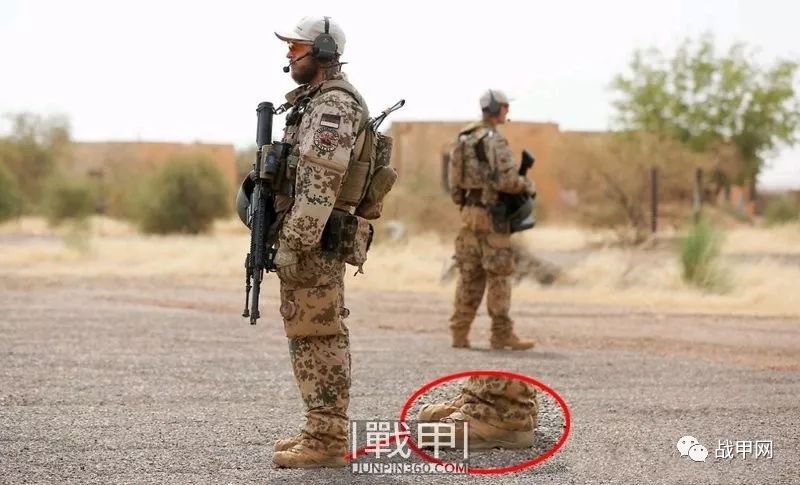
German soldier (possibly special forces) wearing LOWA.
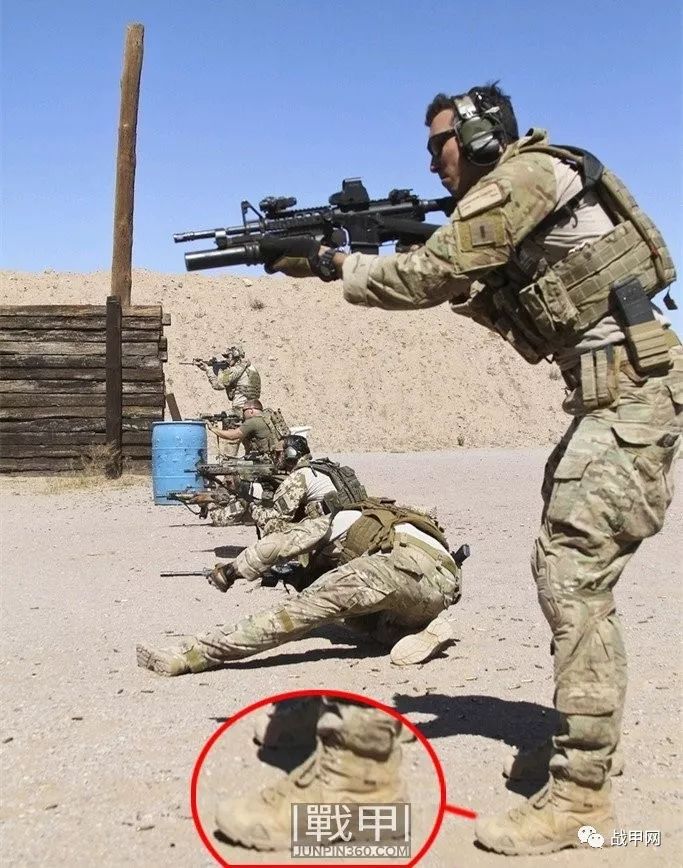
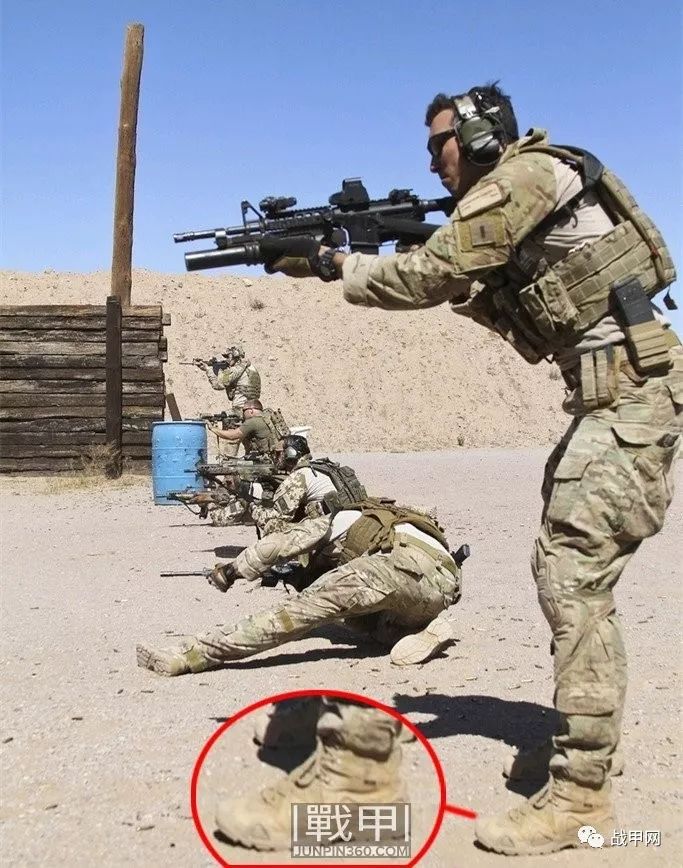
This image is quite interesting; I found it while searching for the German army. I don’t know if the German soldiers in the background are wearing LOWA, but the American soldier in front is definitely a ZEPHYR GTX user (you can even clearly see the black GTX tag on the shoe).
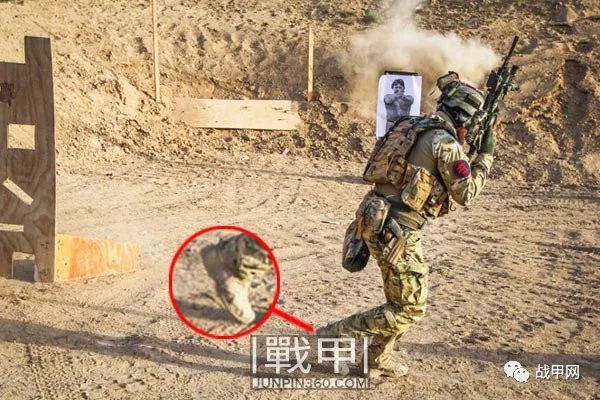
Polish soldier wearing LOWA boots.
Although I previously mentioned that due to the U.S. Army’s AR670-1 boot standard restrictions, images of regular troops wearing LOWA are not common, there are still some examples of regular units procuring LOWA on their own.
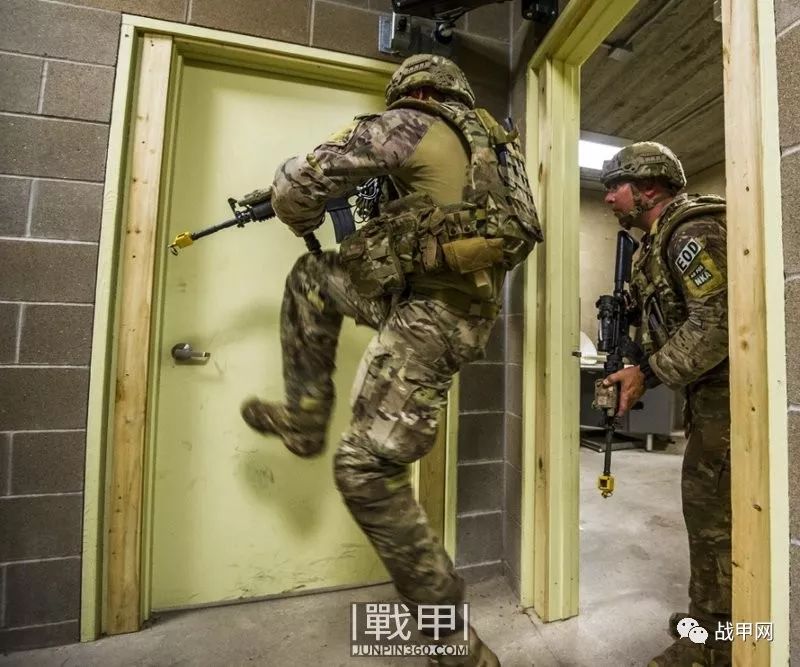
The 302nd Engineer Battalion’s EOD team procured a number of LOWA boots for their own comfort (both soldiers in the image are wearing LOWA).
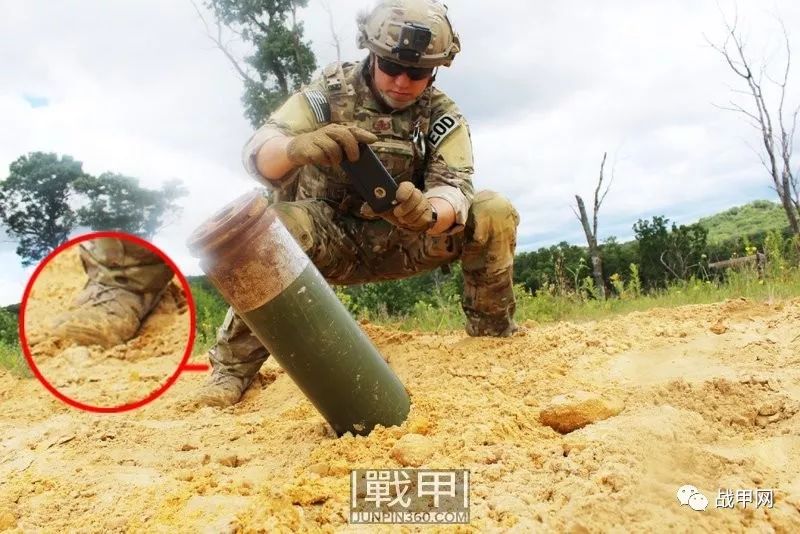
Even the National Guard’s EOD team got themselves a pair of LOWA!
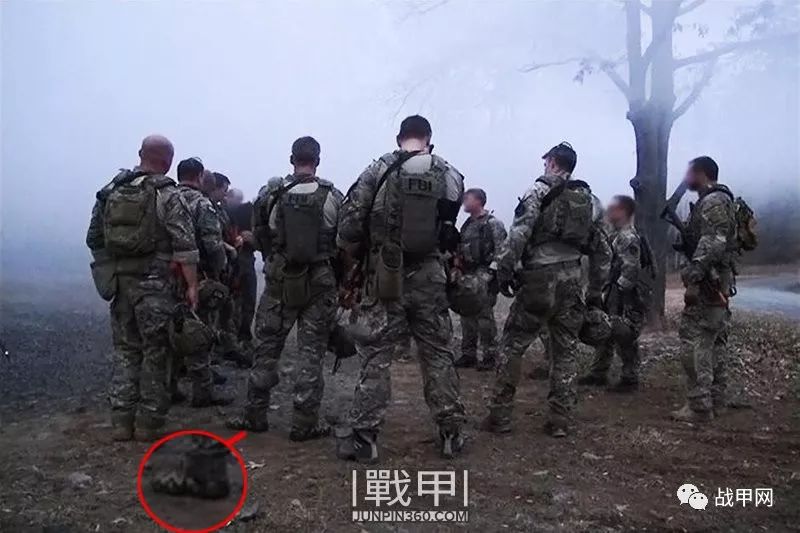
Of course, LOWA is not only loved by soldiers; some law enforcement agencies also prefer them. The image above shows FBI’s HRT (Hostage Rescue Team) wearing LOWA boots.
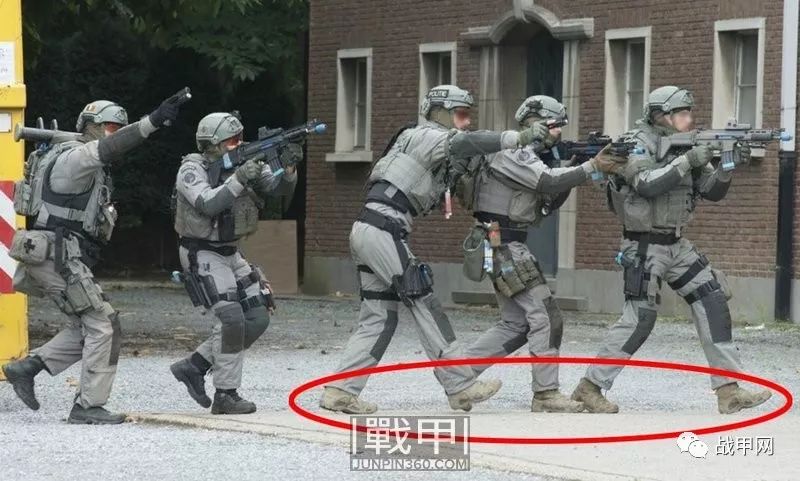
A group of Belgian special police wearing LOWA.
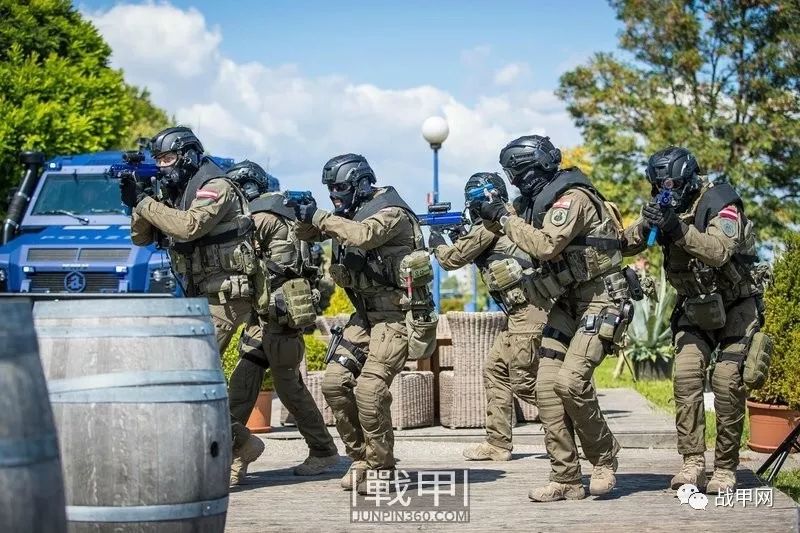
A whole unit of Austrian police wearing LOWA (all of them, I won’t highlight anyone specifically).
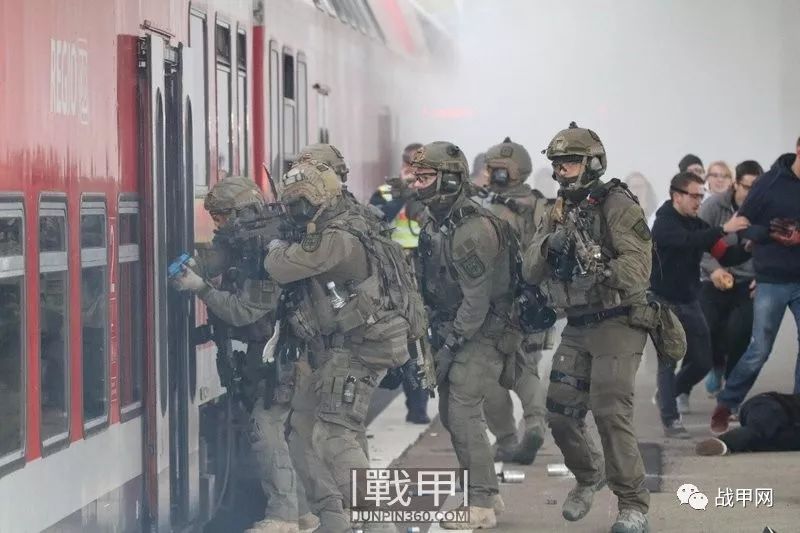
A whole unit of German special police wearing LOWA (as expected of German civil servants, supporting German brands is a must).
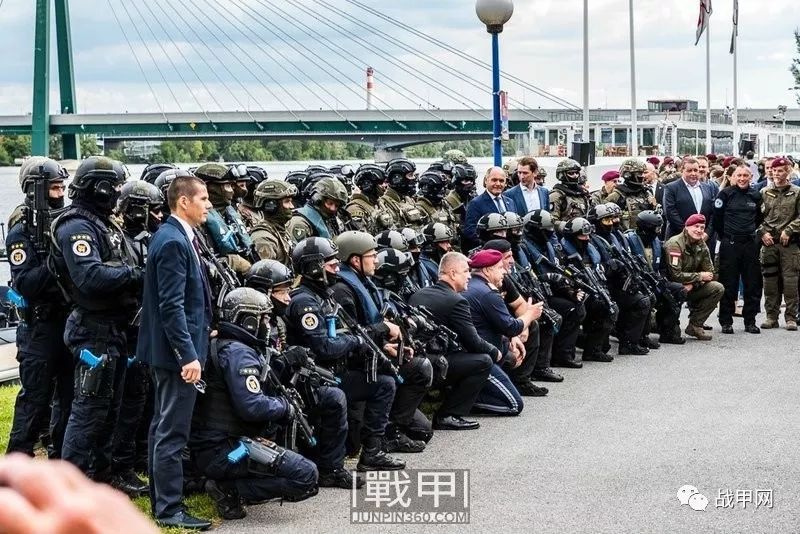
A whole unit of the German GSG9 wearing LOWA during operations.
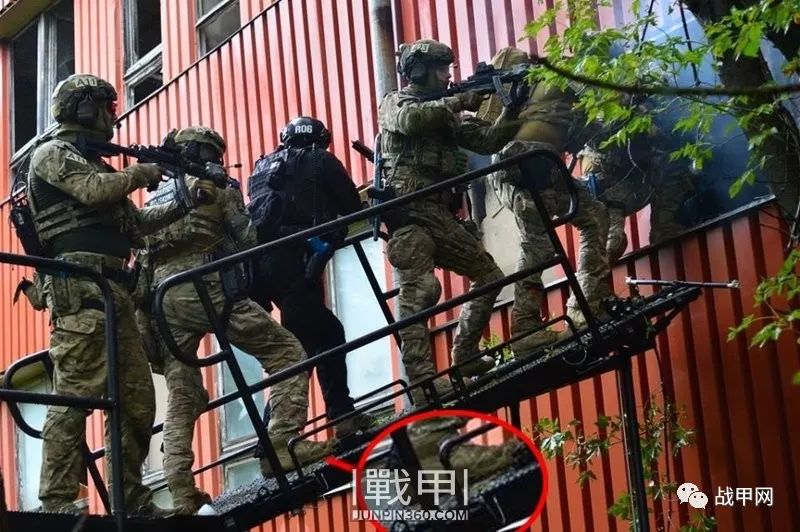
Polish and French special police wearing LOWA during operations.
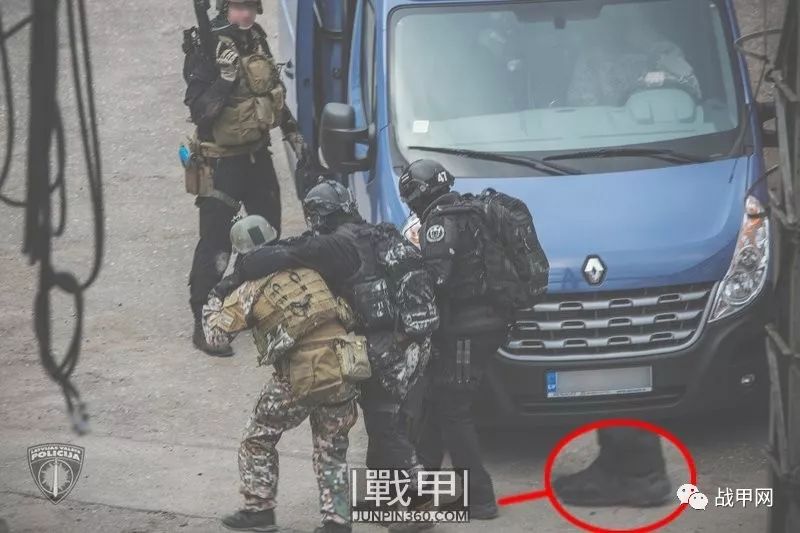
Latvian special police using LOWA boots.
Basically, this concludes my review of the LOWA ZEPHYR GTX, which includes some images of real soldiers and law enforcement officers. Lastly, I want to share my personal usage experience and some important considerations.
The ZEPHYR is a boot designed with lightweight considerations from the beginning, so compared to traditional outdoor shoes, it is indeed very lightweight (around 500 grams per shoe). It can save physical energy during long walks. The cool appearance and unique exoskeleton design, along with the CCS climate control system, make the shoes exceptionally comfortable after the break-in period. Coupled with the thin GTX lining, they ensure dryness even in humid and cold climates. LOWA’s own sole also provides sufficient slip resistance, especially suitable for the rainy and humid winters of southern China (in humid and low temperatures, once the shoes get wet, the cold wind will blow directly on the soles, causing rapid heat loss, which is truly terrifying). Of course, the climate in northern China is also suitable for wearing LOWA, as you no longer need to worry about cold feet while walking on light snow in winter. In Korea, which shares the same latitude, the army’s special forces also use the ZEPHYR. The only drawback of the ZEPHYR is that the original insole is relatively hard, so remember to replace it with a softer insole. This will provide a more comfortable experience and allow you to truly appreciate the comfort that a good shoe brings.
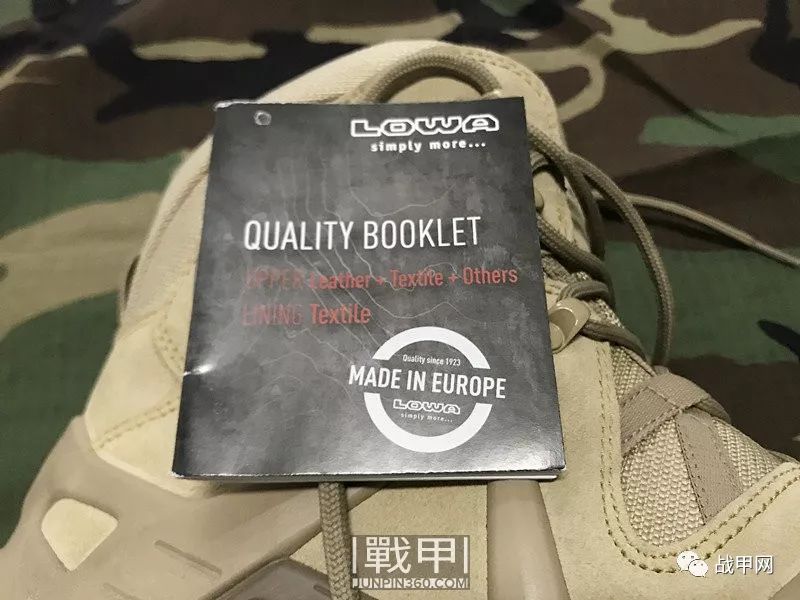
Also included with the shoes is a manual in multiple languages (including Simplified Chinese).
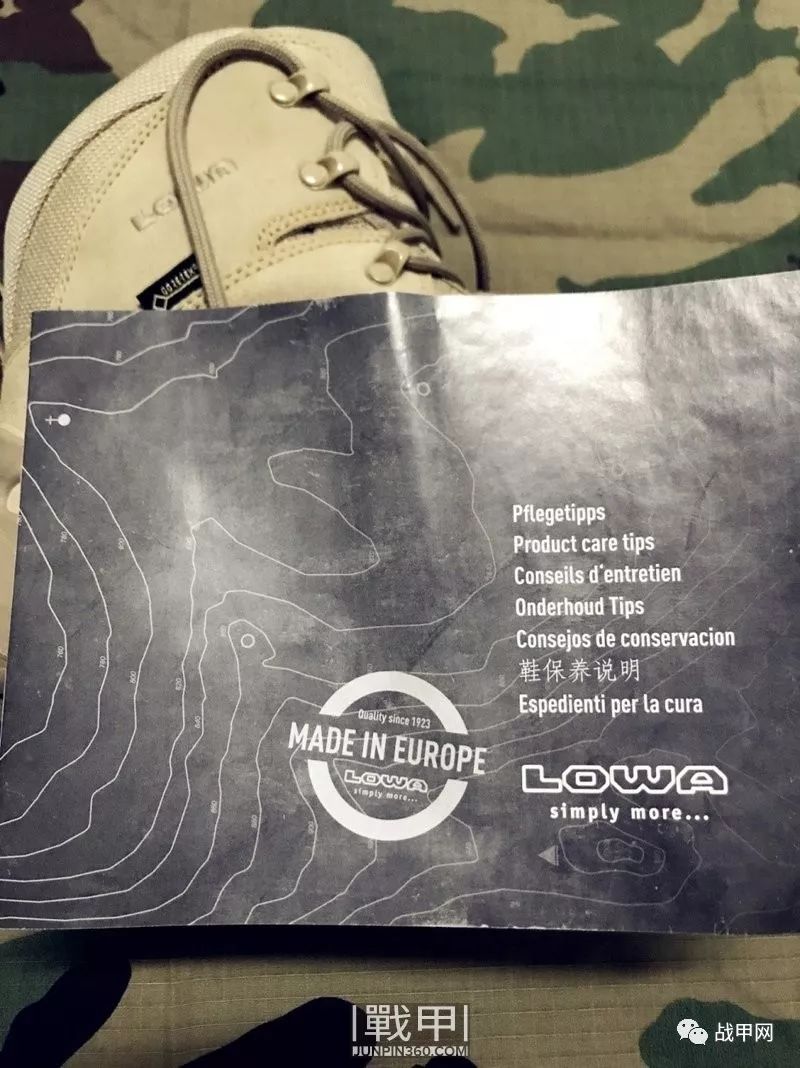
And a maintenance guide, which is especially important, as many people’s shoes have suffered unnecessary damage or even damage to the GTX lining due to improper “maintenance”. If you need to clean or maintain them, it is best to follow the maintenance instructions or take this guide to a professional shoe store for expert handling. After all, a good pair of shoes requires careful maintenance to ensure a longer lifespan!
